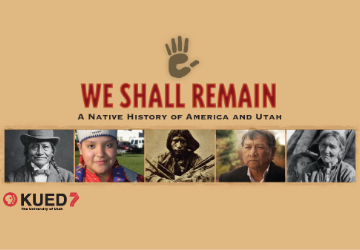By Wendy Leonard
"I think for too long the American Indian story has been considered only a 19th Century story," said Elizabeth Player, an educator hired to work with the University of Utah's American West Center to develop 24 lesson plans, including glossaries, mini-histories, interactive maps of original territories and more for Utah teachers to incorporate more of the American Indian heritage into current teaching plans. "This shows that our Utah American Indians are here, they're vital, they're living their culture. To make sure that our students are seeing that in their classrooms is going to make a big difference."
The new comprehensive study program for K-12 educators in all Utah schools delivers such tidbits as the fact that the Ute Indian tribe manages one of the largest herds of buffalo in the country, Paiute men historically grew beards when few Native Americans can, and the Navajo Nation has its own president, vice president and government apart from the United States government.
Lesson plans are based on KUED's production of five documentaries about the prominent tribes in Utah, "We Shall Remain: A native history of America and Utah," as the two collaborated on the major curriculum project for Utah schools. DVDs of the episodes are contained in a binder with the 24 lesson plans and other instructional materials that were recently sent out to all parochial, private, public and charter schools in the state. Workshops are also being held in various districts through December, to introduce teachers to the materials. Educators who attend the workshops receive their own grade-specific teaching materials from the American West Center's project.
"The history of Utah, and indeed of the United States, looks significantly different when viewed from the Indian perspective," said Matthew Basso, history and gender studies professor at the U. and director of the American West Center. "It is essential for students to learn about Utah's tribes' long struggles for survival and why those struggles occurred. It is just as essential for students to realize that while each of these tribes has had setbacks and tragedies, they have also had triumphs."
Interesting to note the role of We Shall Remain in this story. PBS produced a fine series telling genuine Native stories. Now its themes and messages are filtering into the school system.
In other words, the good media is driving out the bad. Hence the need for more good media. Along with (my) criticism to ensure it remains good. <g>
For more on the subject, see Native Documentaries and News.


No comments:
Post a Comment
Note: Only a member of this blog may post a comment.